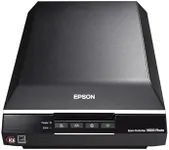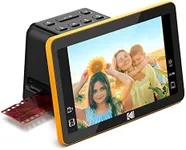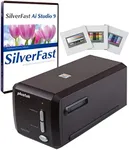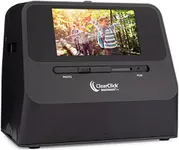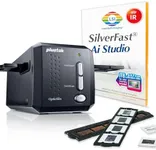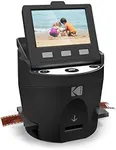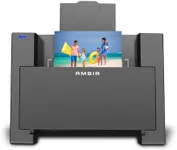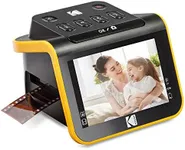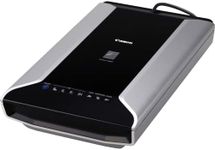Buying Guide for the Best Batch Slide Scanners
When choosing a batch-slide scanner, it's important to consider several key specifications to ensure you get the best fit for your needs. Batch-slide scanners are used to digitize multiple slides at once, making them ideal for archiving and preserving photographic memories. Understanding the key specs will help you make an informed decision and select a scanner that meets your requirements.ResolutionResolution refers to the amount of detail the scanner can capture, measured in dots per inch (DPI). Higher resolution means more detail and larger file sizes. For general use, a resolution of 2400 DPI is usually sufficient. If you need to capture fine details for professional or archival purposes, look for a scanner with 4000 DPI or higher. Consider your end use: if you plan to print large photos or need high-quality digital archives, opt for higher resolution.
Batch Scanning CapacityBatch scanning capacity indicates how many slides the scanner can process at once. This is important for efficiency, especially if you have a large number of slides to digitize. Scanners with a capacity of 20-50 slides are suitable for moderate use, while those with capacities of 100 slides or more are ideal for heavy-duty scanning. Choose a capacity that matches the volume of slides you need to scan regularly.
Scanning SpeedScanning speed is the time it takes for the scanner to digitize each slide, usually measured in seconds per slide. Faster scanning speeds can save you a lot of time, especially when dealing with large batches. Entry-level scanners may take 30-60 seconds per slide, while high-end models can scan in under 10 seconds per slide. If time efficiency is crucial for you, opt for a scanner with a faster scanning speed.
Color DepthColor depth, measured in bits, determines the range of colors the scanner can capture. Higher color depth results in more accurate and vibrant images. Most scanners offer 24-bit color depth, which is sufficient for general use. For professional or archival purposes, look for scanners with 48-bit color depth to ensure the best color accuracy and detail. Consider the importance of color accuracy in your digitized images when choosing the color depth.
Software and CompatibilityThe software that comes with the scanner can greatly affect your user experience. Look for scanners that include user-friendly software with features like dust and scratch removal, color correction, and batch processing. Additionally, ensure the scanner is compatible with your operating system (Windows, macOS, etc.). If you need advanced editing features, check if the scanner software integrates well with programs like Adobe Photoshop. Choose a scanner with software that meets your editing and processing needs.
ConnectivityConnectivity options determine how the scanner connects to your computer. Common options include USB, Wi-Fi, and Ethernet. USB is the most straightforward and reliable, while Wi-Fi and Ethernet offer more flexibility and convenience, especially in a networked environment. Consider your workspace setup and whether you need the flexibility of wireless connectivity or the reliability of a wired connection.
Build Quality and DurabilityBuild quality and durability are important for ensuring the scanner can handle frequent use and last for years. Look for scanners made with high-quality materials and robust construction. If you plan to use the scanner heavily, choose a model known for its durability and reliability. Reading user reviews and checking the manufacturer's warranty can also give you an idea of the scanner's longevity.
